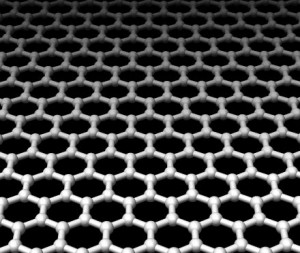Mar
17
A Better Way to Store Hydrogen
March 17, 2010 | 4 Comments
Javad Rafiee, a doctoral student in the Department of Mechanical, Aerospace, and Nuclear Engineering at Rensselaer Polytechnic Institute, has developed a new method for storing hydrogen at room temperature. Rafiee seems determined to play a key role in solving global dependency on fossil fuels. The young man is one winner of the 2010 $30,000 Lemelson-MIT Rensselaer Student Prize, of the four 2010 winners announced March 3, 2010.
Rafiee is the fourth recipient of the Lemelson-MIT Rensselaer Student Prize. The prize, first given in 2007, is awarded annually to a Rensselaer senior or graduate student who has created or improved a product or process, applied a technology in a new way, redesigned a system, or demonstrated remarkable inventiveness in other ways.
Hydrogen storage is well known to be a significant problem for the advancement and proliferation of fuel cell and hydrogen technologies in cars, trucks, and other applications. Rafiee has created a novel form of engineered graphene that exhibits hydrogen storing capacity far exceeding any other known material.

Graphene Latticework Graphic. This graphic represents an atom-thin sheet of graphene, a form of carbon. Click image for the largest view. Image Credit: Wikipedia Commons.
The hydrogen storage idea is a development of new method for manufacturing and using graphene, an atom-thick sheet of carbon atoms arranged like a nanoscale chain-link fence, to store hydrogen. The proposed solution is said to be inexpensive and easy to produce.
With adviser and Rensselaer Professor Nikhil Koratkar, Rafiee uses a combination of mechanical grinding, plasma treatment, and annealing to engineer the atomic structure of graphene to maximize its hydrogen storage capacity. The new graphene material exhibits a hydrogen storage capacity of 14 percent by weight at room temperature – far exceeding any other known material.
How big a deal is this? The 14-percent capacity surpasses the U.S. Department of Energy’s 2015 target of realizing a material with hydrogen storage capacity of 9 percent by weight at room temperature. Rafiee said his graphene is also one of the first known materials to surpass the Department of Energy’s 2010 target of 6 percent. This is a big deal indeed.
Rafiee’s graphene exhibits three critical attributes that result in its unique hydrogen storage capacity:
The first is high surface area. Graphene’s unique structure, only one atom thick, means that each of its carbon atoms is exposed to the environment and, in turn, to the hydrogen gas.
The second attribute is low density. Graphene has one of the highest surface area-per-unit masses in nature, far superior to even carbon nanotubes and fullerenes.
The third attribute is favorable surface chemistry. After oxidizing graphite powder and mechanically grinding the resulting graphite oxide, Rafiee synthesized the graphene by thermal shock followed by annealing and exposure to argon plasma. These treatments play an important role in increasing the binding energy of hydrogen to the graphene surface at room temperature, as hydrogen tends to cluster and layer around carbon atoms.
Meanwhile . . . Victor Aristov and colleagues indicate that graphene has the potential to replace silicon in high-speed computer processors and other devices. Standing in the way, however, are today’s cumbersome, expensive production methods, which result in poor-quality graphene and are not practical for industrial scale applications.
Aristov and colleagues report that they have developed “a very simple procedure for making graphene on the cheap.” They describe growing high-quality graphene on the surface of commercially available silicon carbide wafers to produce material with excellent electronic properties. It “represents a huge step toward technological application of this material as the synthesis is compatible with industrial mass production.” Their report is published in Nano Letters.
Aristov is leading an impressive list of researchers from the Leibniz Institute for Solid State and Materials Research in Dresden, Germany, the Institute of Solid State Physics, Russian Academy of Sciences, Moscow District, Russia, the Institute of Solid State Physics, Dresden University of Technology, Dresden, Germany, the MAX-lab, Lund University, Lund, Sweden, and the TASC National Laboratory, INFM-CNR, Trieste, Italy.
Could these two breakthroughs merge or would a technology merger make sense? That’s an unknown for today, but graphene’s raw material, carbon, isn’t exotic, rare or any kind of wildly expensive material. Lots of unanswered question come with the news. The raw material will be a cost, the formation and process techniques will be costs. If the material will cycle hydrogen in and out without limit that’s one thing, but if there are cycling limits the value would be quite different. Then what is involved to get the hydrogen in and back out again?
There’s not enough in the releases to make conclusions, but the new path is clearer. There is a long way to go, but the prospects are intuitively very promising. Hydrogen storage is a major problem and if the young man and the European team both have valid starting points for effective, low cost, long life and energy dense hydrogen storage with hopefully simple and cheap loading and unloading – one’s view on hydrogen fuel production might brighten up dramatically.
Comments
4 Comments so far


[…] View original post here: A Better Way to Store Hydrogen | New Energy and Fuel […]
[…] See the original post: A Better Way to Store Hydrogen | New Energy and Fuel […]
[…] the original post: A Better Way to Store Hydrogen | New Energy and Fuel By admin | category: DRESDEN University of Technology | tags: institute, materials, […]
Do you people have a facebook fan page? I looked for one on twitter but could not discover one, I would really like to become a fan!